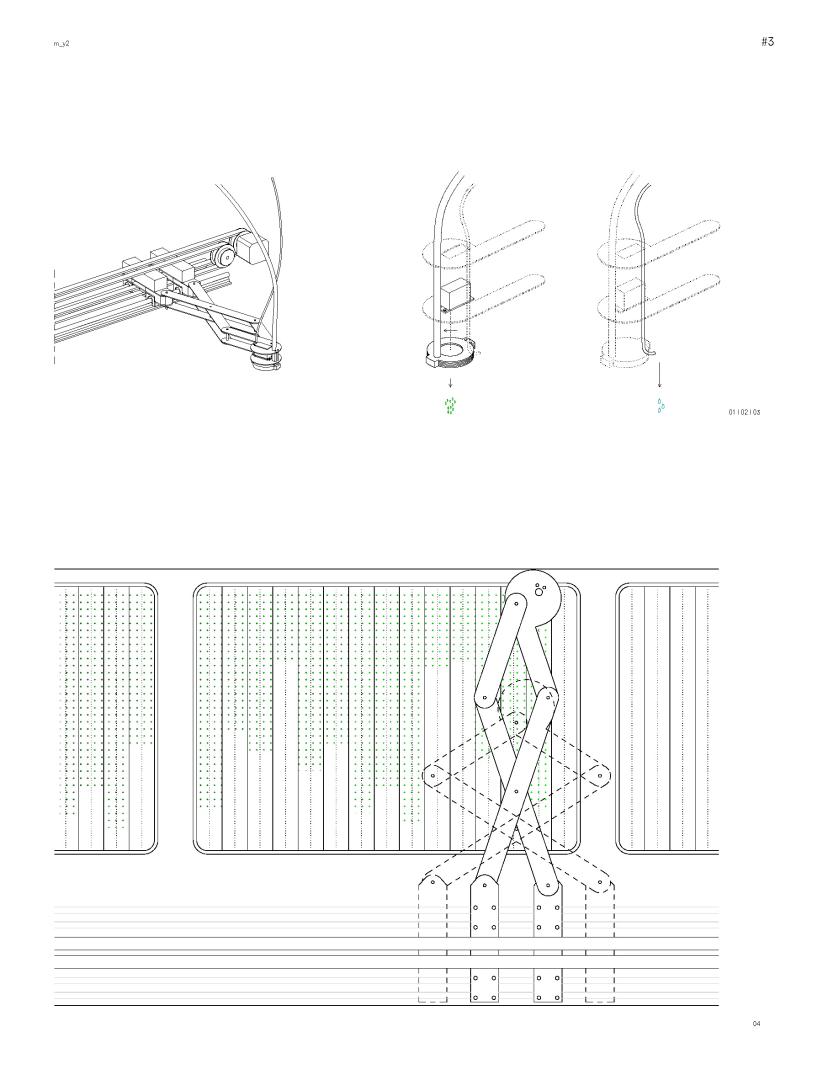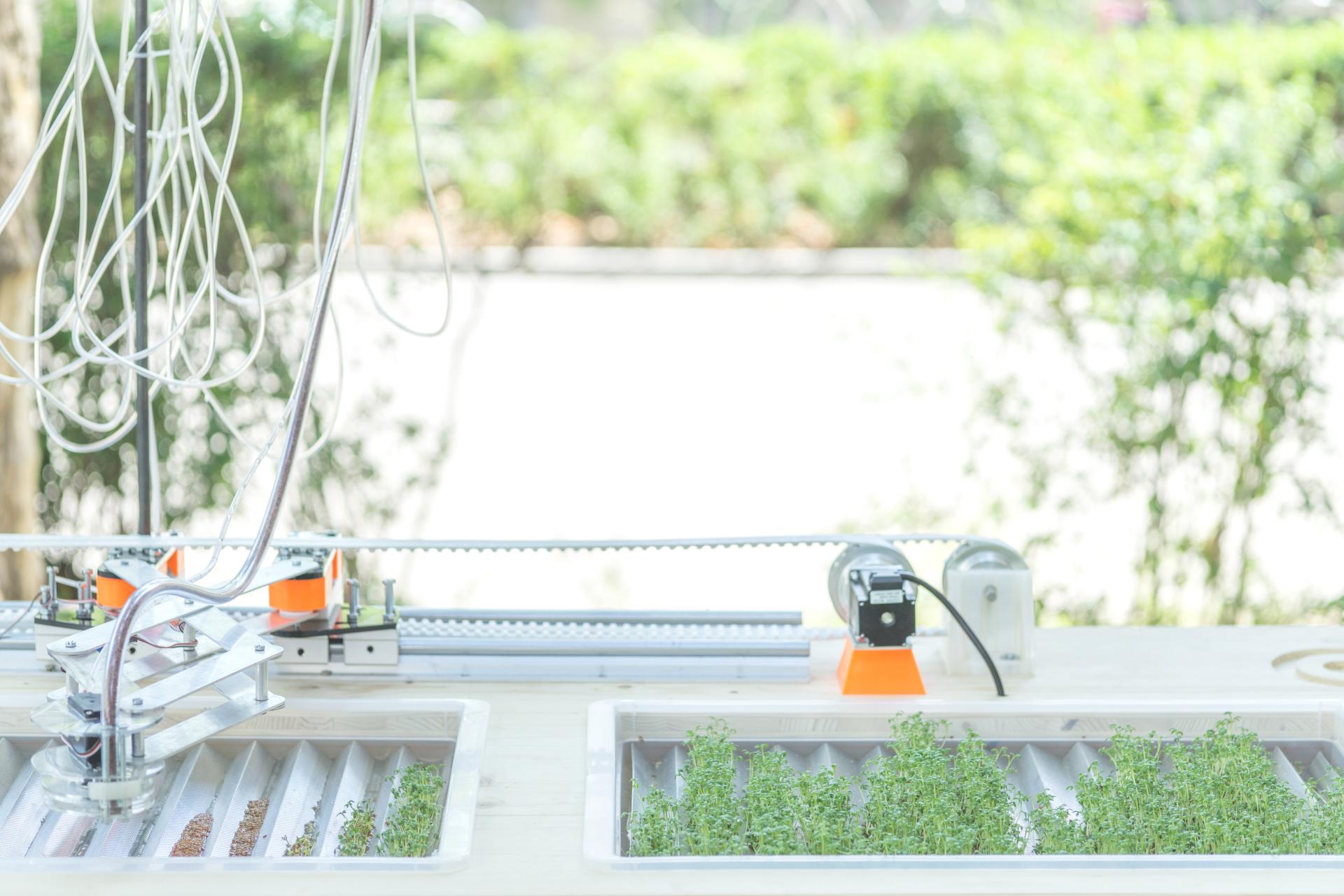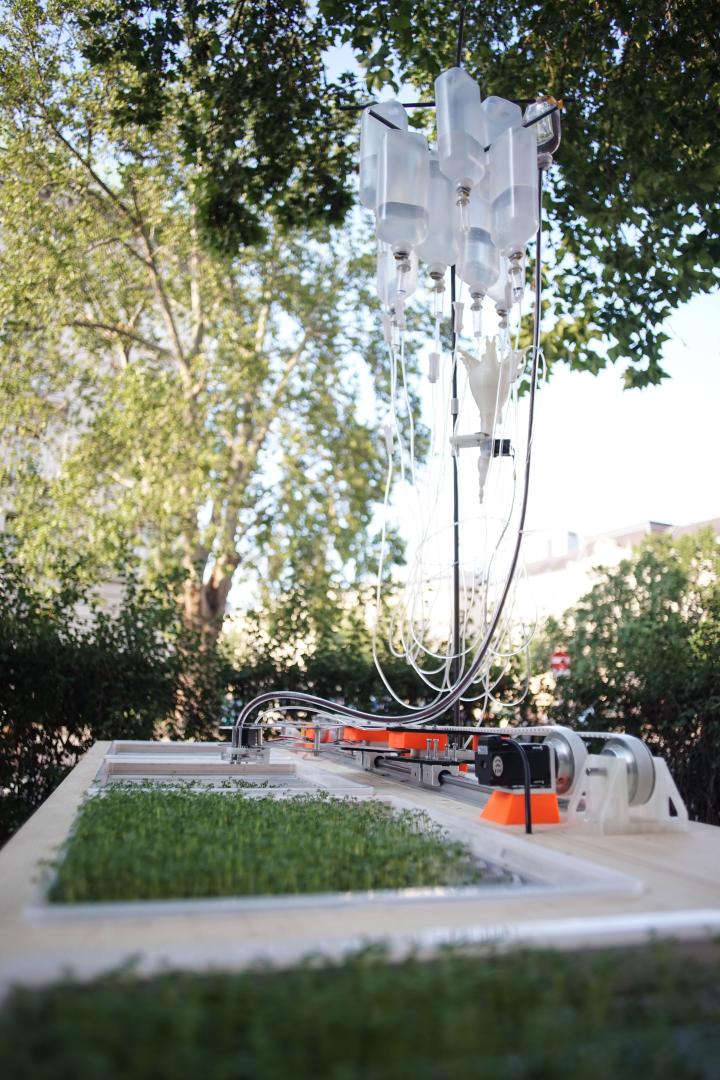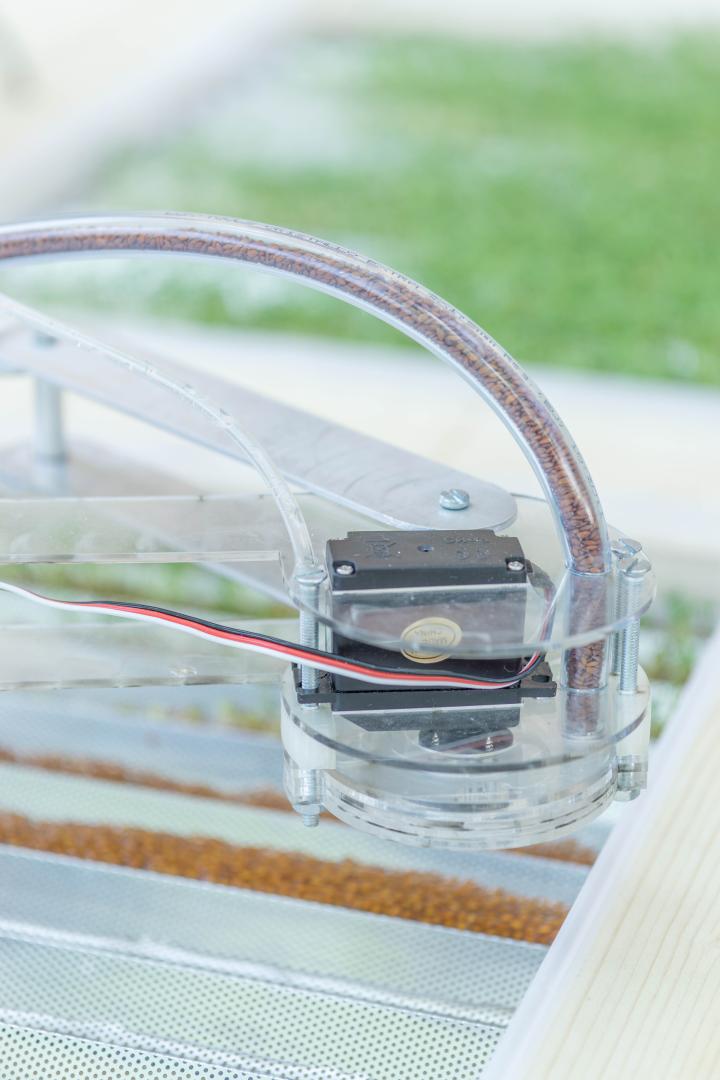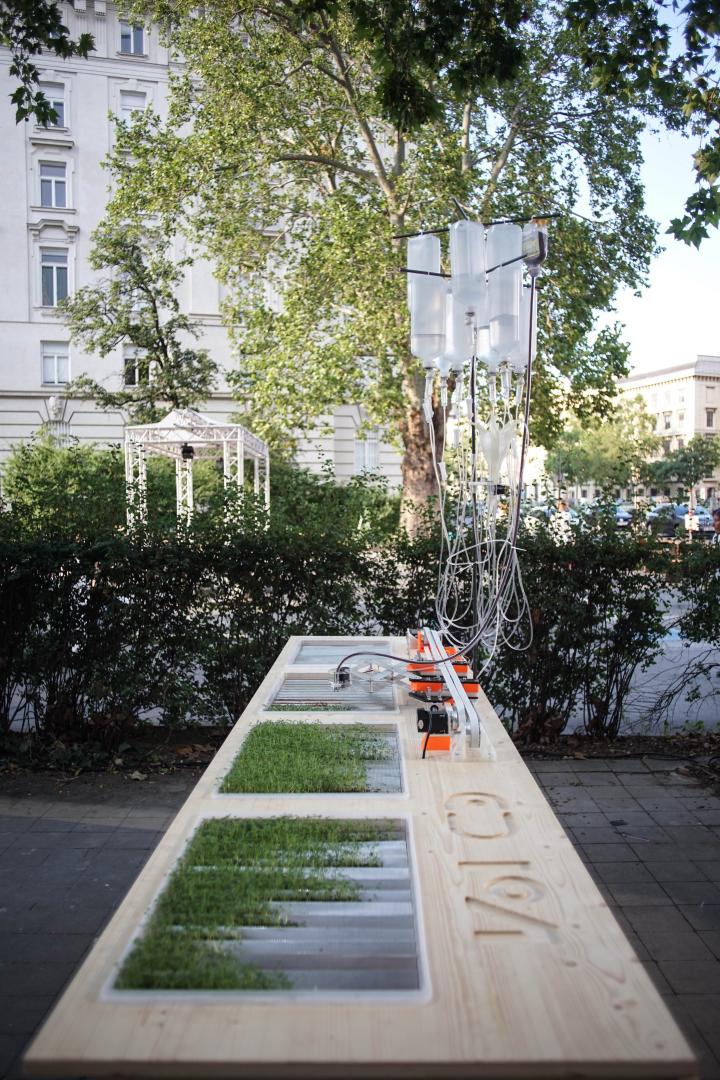The Air We Make
Basic information
Project Title
Full project title
Category
Project Description
The project is about live-tracking and live-compensation. Sensors read CO2 levels in a room. In real time, the required biomass has been calculated and transmitted to a seed-printer with watering system. We are located at the threshold of a new reality, an era of clear hyper-interdependence and planetary scale computational capabilities mixed together with uncertainties of the anthropocene and approaching scarcity of resources. Day by day, a grown CO2 graph visualised the air quality.
Project Region
EU Programme or fund
Description of the project
Summary
The project is about live-tracking and live-compensating CO2. During an exhibition, sensors measured CO2 in a particular exhibition room. The CO2-levels fluctuated with the number of visitors. In real time the required biomass was calculated and transmitted to a prototypical designed seed-printer with a watering system outside of the exhibition venue.
the project was set up by: Leonard Kern and Kim Konstantin (students), Galo Moncayo and Bernhard Sommer (teachers)
Key objectives for sustainability
We are located at the threshold of a new reality, an era of clear hyper-interdependence and planetary scale computational capabilities mixed together with uncertainties of the anthropocene and approaching scarcity of resources. Can technical ingenuities evoke in us a new understanding of the milieu and playfully help us overcome the growing sense of futility? CO2 in a scale of a single room is measured by sensors, data is then sent to the machine, which represents it in a Cartesian coordinate system with planting seeds into hydroponic system, ensuring their growth, keeping water levels intact with a reacting watering apparatus.
Temporary adjusted for measuring interior spaces, each time a level of CO2 is crossing 600 ppm (complaints of stiffness and odours), the machine plants a batch of seeds within a stripe. Each stripe of hydro culture is a day’s worth data and each water basin contains two weeks of CO2 measurements. Over time the planted bar grows, representing its CO2 content. Day by day, a grown CO2 graph is created visualising the measure air quality.
Key objectives for aesthetics and quality
This project has been developed in the Energy Design Strategies Seminar at the University of Applied Arts Vienna. In the summer term 2019, the focus has been on monitoring and data visualisation. We have been invited by the next ENTERprise to collaborate on an exhibition design for the AzW: Critical Care - Architecture and Urbanism for a Broken Planet. Besides a very low-tech energy design, our task has been to monitor weather and climate data throughout the exhibition and work on the visualisation and interpretation of the measured data.
For the exhibition we chose two other student works. For the project The Air We Make the development took longer and it was finally implemented at the Angewandte Festival and at the Lange Nacht der Forschung.
It is intrinsic attribute of data visualizition to go beyond functionality. In this case, creating an edible and growing graph, the technical style presentations of the CO2 fluctuations are overcome. These presentations lets us look at the threats and mechanisms of global warming with a huge emotional distance. The Air We Make units emotion and scientific findings to foster a new awarenesses of the a potential cycle of sustainable living.
Key objectives for inclusion
As an easy comprehensible and emotionally direct device, the Air We Make is a contribution to represent complex relationships in a simple language.
Results in relation to category
We handed in in the category lifestyle and product, as the idea of the object is to change our lifestyles by awareness into a more sustainable one. However, this awareness comes by design. The project however, could have been also submitted under Interdisciplinary education models as the our architecture students had to learn not only a bit more than usual about CO2, sensors and statistics, yet, they also took on the challenge to build a CNC machine on their own. All parts of this machine were developed and printed on the departments on PLA printer, milled in the University's wood shop and assembled, programmed and wired by the students themselves. So they learned a lot about machine programming, electronics and sensor techniques.
How Citizens benefit
There is a very optimistic and humorous way, we could involve the citizens. At the end of the exhibition, the rector of the University, Gerald Bast, invited the visitors of the exhibition to a breakfast with cress sandwiches (as the graph was growing cress).
The reaction was enormous. The Austrian Green Party wanted to get the table for the parliament, the Technical Museum for an exhibition. These requests were finally cancelled when the pandemic reached Austria.
Innovative character
Computational and production technologies indicate a big change and a big chance. As today, such a complex device as a CNC printer can be adapted to become a seeding machine, can be developed, produced, built and programmed by students (from a completely different discipline than e.g. machine engineering), with just a little help of their teachers, there is the chance to re-regionalize production, also building production. There is the chance to be way more efficient, working just in time, just the quantities you need - or the quantities the planet needs. To create designs that put human beings in the center of an ongoing thoughtful cycle of life is the innovative character of this project.

